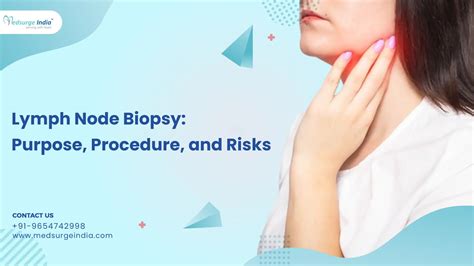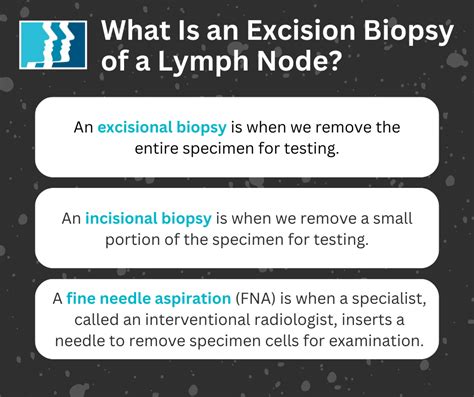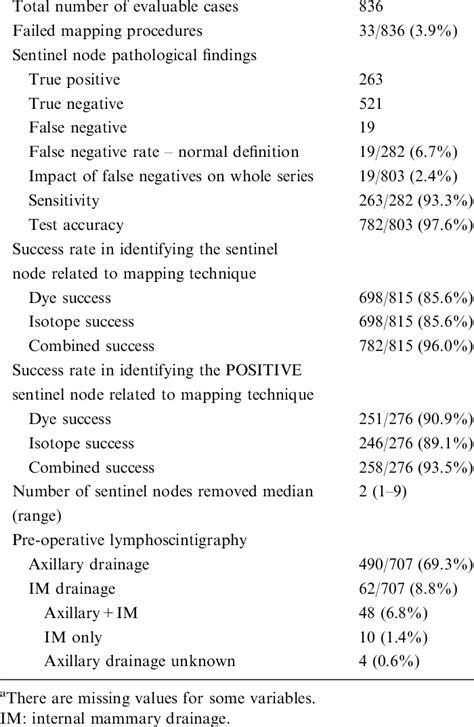Intro
Discover 5 essential lymph node biopsy tips, including preparation, recovery, and diagnosis insights, to navigate lymphoma diagnosis and treatment with confidence, understanding lymph node functions, and biopsy procedures.
The lymphatic system plays a vital role in our body's defense mechanism, and lymph nodes are an essential part of it. These small, bean-shaped structures help filter out harmful substances and cells, including cancer cells. When a lymph node becomes swollen or enlarged, it can be a sign of an underlying health issue, and a lymph node biopsy may be necessary to determine the cause. In this article, we will delve into the world of lymph node biopsies, exploring what they are, why they are performed, and providing valuable tips for individuals who may be undergoing this procedure.
A lymph node biopsy is a medical procedure that involves removing a lymph node or a sample of tissue from it to examine for abnormal cell growth, infection, or other conditions. This procedure can be done using a fine-needle aspiration, core needle biopsy, or surgical excision. Each method has its own set of advantages and disadvantages, and the choice of procedure depends on the location and size of the lymph node, as well as the patient's overall health.
The importance of lymph node biopsies cannot be overstated. They help doctors diagnose and treat various health conditions, including lymphoma, cancer, and infections. By examining the tissue sample under a microscope, doctors can identify abnormal cell growth, detect the presence of cancer cells, or diagnose infectious diseases such as tuberculosis or cat-scratch disease. With this information, healthcare providers can develop an effective treatment plan to manage the underlying condition and prevent further complications.
Lymph Node Biopsy Overview

Pre-Biopsy Preparation
To ensure a smooth and successful procedure, it is essential to prepare properly for a lymph node biopsy. This includes avoiding certain medications, such as blood thinners, and informing the doctor about any underlying medical conditions. Patients should also wear comfortable clothing and avoid eating or drinking for several hours before the procedure. By following these simple steps, individuals can help minimize the risk of complications and ensure accurate test results.Benefits of Lymph Node Biopsy

Some of the benefits of lymph node biopsy include:
- Accurate diagnosis: A lymph node biopsy can help doctors diagnose various health conditions, including cancer, infections, and autoimmune disorders.
- Effective treatment: By examining the tissue sample, doctors can develop an effective treatment plan to manage the underlying condition and prevent further complications.
- Minimally invasive: Most lymph node biopsies are performed using a fine-needle aspiration or core needle biopsy, which are minimally invasive procedures.
- Quick recovery: The recovery time for a lymph node biopsy is typically short, and patients can resume their normal activities within a few days.
Risks and Complications
While a lymph node biopsy is generally a safe procedure, there are some risks and complications to be aware of. These include bleeding, infection, and nerve damage. In rare cases, the biopsy may not provide a definitive diagnosis, and additional testing may be necessary. To minimize the risk of complications, it is essential to follow the doctor's instructions carefully and attend all scheduled follow-up appointments.5 Lymph Node Biopsy Tips

Additional Tips
In addition to these tips, there are several other things you can do to prepare for a lymph node biopsy. These include: * Avoiding strenuous activities for several days after the procedure * Keeping the biopsy site clean and dry * Avoiding heavy lifting or bending * Taking pain medication as directed by your doctor * Attending all scheduled follow-up appointmentsLymph Node Biopsy Aftercare

Some of the things you can expect after a lymph node biopsy include:
- Mild pain or discomfort at the biopsy site
- Swelling or bruising at the biopsy site
- Fatigue or weakness
- Dizziness or lightheadedness
Managing Pain and Discomfort
To manage pain and discomfort after a lymph node biopsy, your doctor may prescribe pain medication or recommend over-the-counter pain relievers. It is essential to follow your doctor's instructions carefully and take the medication as directed. You can also use ice packs or warm compresses to help reduce swelling and ease pain.Lymph Node Biopsy Results

Some of the possible results of a lymph node biopsy include:
- Normal: The tissue sample appears normal, and no abnormal cell growth or infection is detected.
- Abnormal: The tissue sample appears abnormal, and further testing may be necessary to determine the cause.
- Cancer: The tissue sample contains cancer cells, and additional testing may be necessary to determine the type and stage of cancer.
- Infection: The tissue sample contains infectious organisms, and treatment may be necessary to manage the infection.
Understanding Your Results
To understand your lymph node biopsy results, it is essential to discuss them with your doctor. Your doctor can explain the results in detail, answer any questions you may have, and provide guidance on the next steps. If the results are abnormal, your doctor may recommend additional testing or treatment to manage the underlying condition.Conclusion and Next Steps

We hope this article has provided you with valuable information about lymph node biopsies. If you have any questions or comments, please don't hesitate to reach out. Share this article with your friends and family, and help spread awareness about the importance of lymph node biopsies.
What is a lymph node biopsy?
+A lymph node biopsy is a medical procedure that involves removing a lymph node or a sample of tissue from it to examine for abnormal cell growth, infection, or other conditions.
Why is a lymph node biopsy performed?
+A lymph node biopsy is performed to diagnose and treat various health conditions, including cancer, infections, and autoimmune disorders.
What are the risks and complications of a lymph node biopsy?
+The risks and complications of a lymph node biopsy include bleeding, infection, and nerve damage. In rare cases, the biopsy may not provide a definitive diagnosis, and additional testing may be necessary.
